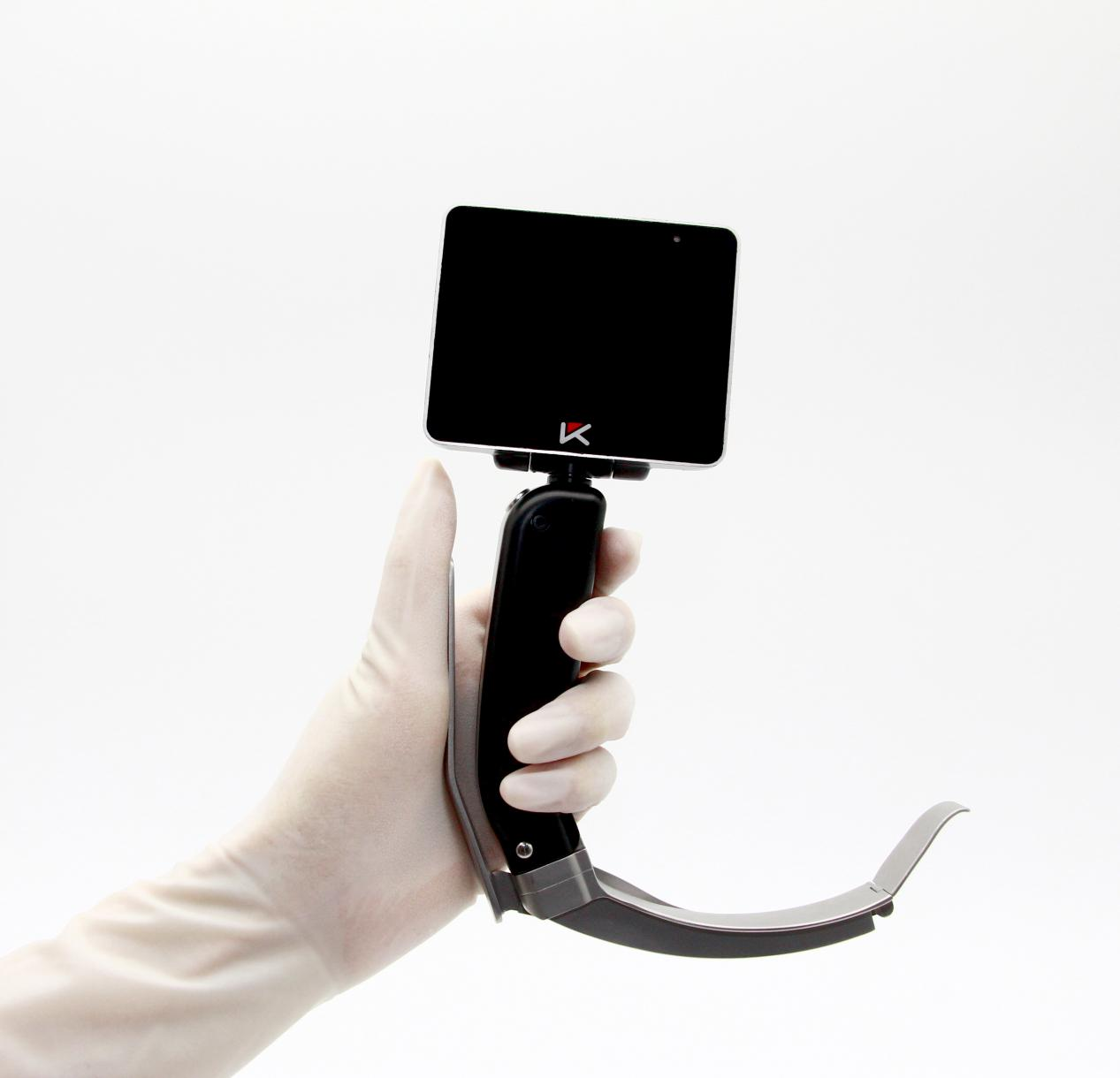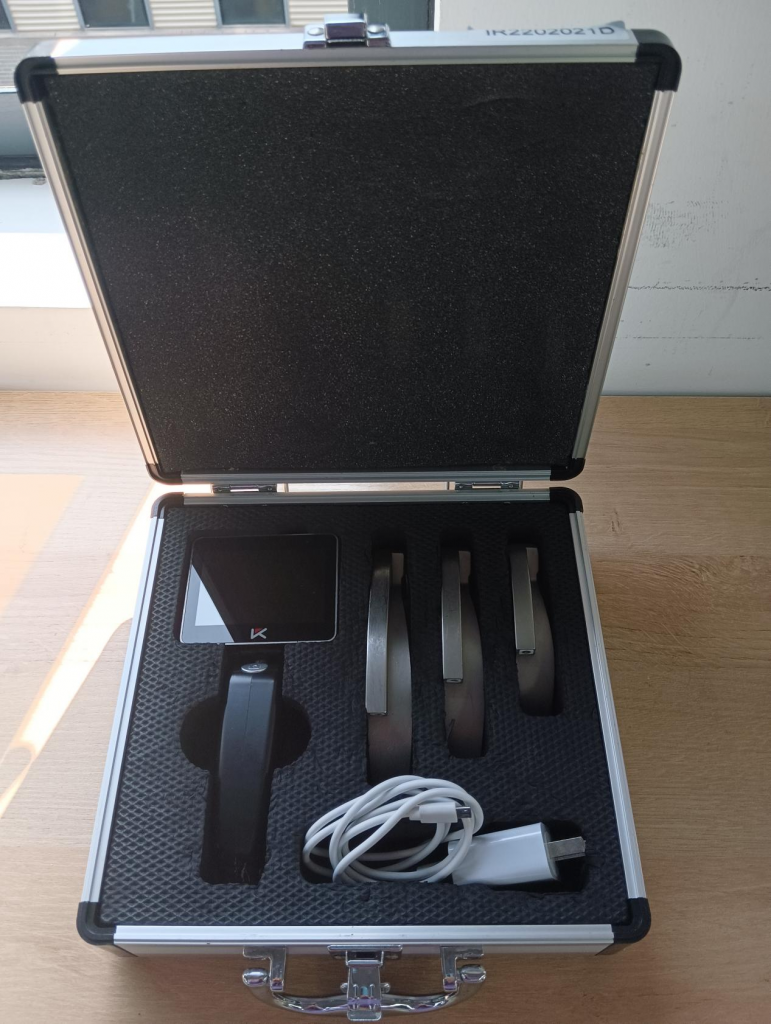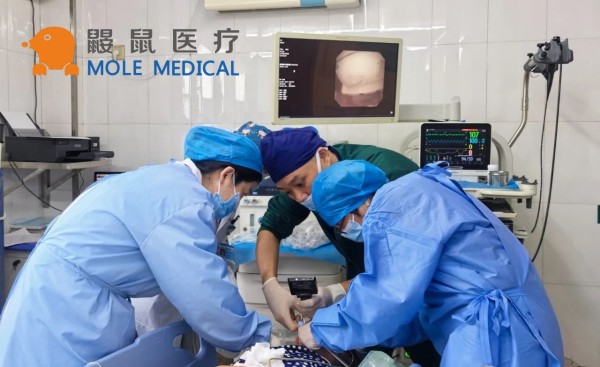Anesthesia Video Laryngoscope: See Clearly
Dec 21, 2023
An Anesthesia Video Laryngoscope is an advanced medical device that provides clear visual guidance during laryngoscopy procedures. The video technology in the device enables medical personnel to see the patient’s airway anatomy in high resolution, facilitating the intubation process.
High-quality anesthesia equipment is essential for successful airway management, and an anesthesia video laryngoscope is a reliable tool for medical professionals to perform this critical task.
Key Takeaways:
- An Anesthesia Video Laryngoscope offers clear visualization during laryngoscopy procedures.
- The device is a reliable tool for airway management, supported by a variety of reliable brands.
- Anesthesia video laryngoscopy empowers medical professionals with advanced visualization technology for challenging airway situations.
Elevate Airway Management with Breakthrough Visual Clarity
Video laryngoscopy technique has revolutionized airway management by offering superior visualization. It involves the use of a laryngoscopy device equipped with a camera that captures video images of the airway anatomy, allowing for accurate placement of the endotracheal tube.
The video laryngoscopy procedure begins with the insertion of the device into the patient’s mouth to provide a clear view of the larynx and surrounding structures. By projecting the video image onto a screen, the anesthesiologist can visualize the airway without having to look directly into the patient’s mouth, hence reducing the risk of exposure to aerosolized particles and blood during intubation.
Furthermore, a specialized laryngoscopy device offers remarkable features such as anti-fogging technology and adjustable LED lighting, enhancing visibility and preventing complications that may arise due to the fogging of the lens.
In summary, video laryngoscopy technique and a specialized laryngoscopy device offer the potential for safer and more efficient airway management through breakthrough visual clarity.
Unlocking the Benefits of Video Laryngoscopy
Video laryngoscopy provides several benefits to airway management techniques. One of the most significant advantages is the clear visualization it offers during laryngoscopy procedures. With video laryngoscopy, clinicians can view the upper airway area in real-time on a monitor, allowing them to make more precise movements when placing the endotracheal tube.
Improved visualization can lead to higher success rates, lower incidence of trauma and complications, and fewer failed intubation attempts. Video laryngoscopy also assists in difficult airway management, particularly in cases where there is anatomical variation or limited mouth opening. Thus, video laryngoscopy helps reduce procedure-related morbidity and mortality rates and enhance patient safety during airway interventions.
When compared to direct laryngoscopy, the application of video laryngoscope devices has shown significantly higher first-attempt intubation success rates. Additionally, this method has greatly reduced the use of alternative techniques like fiberoptic bronchoscopy, increasing throughput time in the operating room. The use of video laryngoscopy assists in patient comfort and may lead to quicker recovery times.
Overall, video laryngoscopy offers a range of benefits for airway management and is fast becoming a standard of care in operating rooms, emergency departments, and intensive care units.
Exploring Advanced Laryngoscopy Techniques
A video laryngoscope provides an excellent tool for performing advanced laryngoscopy techniques that aid healthcare professionals in managing difficult airways and improving patient outcomes. By offering high-resolution images and exceptional clarity, video laryngoscopy techniques can help reduce complications and enhance intubation success.
One of the advanced laryngoscopy techniques that can be performed using a video laryngoscope is the BURP (Backward-Upward-Rightward Pressure) maneuver. This technique involves applying pressure to the thyroid cartilage and pushing it backwards, upwards, and to the right, thus improving the view of the glottis. Another technique is the BOUGI technique, which involves the use of a flexible Boogie guide during intubation to facilitate safe passage of the endotracheal tube.
Furthermore, the STORZ-scope technique can also be performed using video laryngoscopy. This technique involves the use of a video laryngoscope to identify the vocal cords and a Storz fiberoptic scope to navigate the trachea and intubate the patient.
Advanced laryngoscopy techniques using a video laryngoscope can significantly enhance airway management, particularly in difficult cases. With the appropriate training and expertise, healthcare professionals can benefit from the exceptional visualization offered by video laryngoscopy techniques to enhance patient care.
Understanding the Anatomy of an Anesthesia Video Laryngoscope
An anesthesia video laryngoscope is a device designed to assist healthcare professionals in performing laryngoscopy procedures with greater visual clarity. It consists of several essential components, including the handle, blade, camera, and display screen.
The handle houses the camera module, which captures a high-definition video image of the airway anatomy for improved visualization. The blade is responsible for holding the endotracheal tube in place during intubation. It is available in different shapes and sizes, such as straight, curved, or angled, to fit different patient anatomies.
The camera captures the video image of the airway anatomy and sends it to the display screen, which is typically located on the handle or a separate monitor. The display screen provides a clear and magnified view of the airway anatomy, allowing for more precise intubation.
With its unique design and advanced features, an anesthesia video laryngoscope has become an essential tool for airway management in various medical settings.
Choosing the Right Anesthesia Video Laryngoscope for Your Needs

When choosing an anesthesia video laryngoscope, there are several factors that should be considered to ensure that the device meets the user’s requirements. One important factor is device ergonomics – the tool should be comfortable to hold and use for prolonged periods of time without causing discomfort or fatigue.
Additionally, blade options should be assessed based on the intended use of the laryngoscope. The type of blade selected can impact the success rate of the procedure, as well as patient comfort and safety.
Compatibility with existing anesthesia equipment is another key consideration. The video laryngoscope should be able to integrate seamlessly with other equipment and technology being used during the procedure to ensure optimal performance and safety.
By carefully assessing these factors and choosing the right anesthesia video laryngoscope, healthcare professionals can enhance their ability to perform successful laryngoscopy procedures with improved visualization and patient outcomes.
Mastering Video Laryngoscopy: Training and Education
Proper training and education are crucial in mastering video laryngoscopy technique. Healthcare professionals need to familiarize themselves with the features and functions of the laryngoscopy video device to ensure optimal performance during procedures.
Fortunately, there are numerous resources available to assist healthcare professionals in enhancing their skills in video laryngoscopy. Many hospitals and medical facilities offer training courses, workshops, and simulation-based programs that focus on the use of the laryngoscopy video device. These programs provide a hands-on approach to learning, allowing healthcare professionals to gain practical experience and confidence in using the device.
Additionally, there are several online resources, such as instructional videos, tutorials, and e-learning modules that provide convenient and accessible options for healthcare professionals to improve their knowledge and skills in video laryngoscopy.
By prioritizing education and training, healthcare professionals can confidently and effectively perform advanced laryngoscopy techniques and ensure the best possible outcomes for their patients.
Pros and Cons of Anesthesia Video Laryngoscopes
While anesthesia video laryngoscopes offer many benefits, it is essential to consider the limitations as well. One advantage of using a video laryngoscope is the clear visualization it provides during intubation, which can increase success rates and improve patient safety. Additionally, the use of a specialized laryngoscopy device can aid in difficult airway management.
However, there are also some cons to using this technology. One of the most significant disadvantages is the cost, as anesthesia video laryngoscopes can be more expensive than traditional laryngoscopes. In addition, there can be a learning curve for healthcare professionals who are not experienced with video laryngoscopy techniques.
It is also important to note that there are limitations to the technology, including restricted access to certain areas of the airway and potential interference from patient movement.
Ultimately, the decision to use an anesthesia video laryngoscope will depend on individual case circumstances and the healthcare provider’s experience and preferences.
Innovation in Anesthesia: The Future of Video Laryngoscopy
As technology in healthcare continues to advance, the future of anesthesia video laryngoscopy looks promising. With ongoing innovations in the field, there are several potential advancements that could improve the device’s performance and functionality.
One area of focus is improving the resolution of anesthesia video laryngoscopes. Higher resolution cameras would provide even clearer visualization of the airway anatomy, streamlining the intubation process and improving patient outcomes.
Another potential innovation is wireless connectivity. By integrating with existing anesthesia equipment, wireless video laryngoscopes could enhance workflow and streamline documentation.
Artificial intelligence (AI) integration is also an exciting prospect for video laryngoscopy. By utilizing machine learning algorithms, AI could aid in airway management decisions and help detect difficult intubation cases before they occur, allowing for proactive intervention.
As these and other innovations continue to progress, the future of video laryngoscopy looks brighter than ever.
Case Studies: Real-World Applications of Video Laryngoscopy
Real-world case studies provide valuable insight into the effectiveness of video laryngoscopy in airway management. In one study, video laryngoscopy was used to intubate a patient with a difficult airway due to a large neck tumor. The clear visual guidance provided by the device allowed for successful intubation and avoided the need for a surgical airway.
In another case, a patient with a history of difficult intubation underwent surgery with the assistance of a video laryngoscope. The device provided superior visualization of the airway, resulting in a successful intubation on the first attempt.
Further studies have shown that video laryngoscopy can be particularly useful in emergency situations and for patients with limited neck mobility. By providing consistent and reliable visualization of the airway, video laryngoscopy can improve intubation success rates and minimize the risk of complications.
Conclusion
As demonstrated in this article, the use of anesthesia video laryngoscopes has revolutionized airway management and improved patient outcomes. By providing clear visual guidance during laryngoscopy procedures, these devices have enhanced the efficacy and safety of intubation.
Healthcare professionals can choose from various video laryngoscope brands, each with its own unique features and advantages. It is crucial to select the best video laryngoscope that suits their specific needs and preferences. Factors such as device ergonomics, blade options, and compatibility with existing anesthesia equipment must be considered.
Proper training and education are essential for mastering video laryngoscopy techniques. Several resources, courses, and simulation-based training programs are available to help healthcare professionals enhance their skills in this area.
While anesthesia video laryngoscopes offer numerous benefits, there are also some disadvantages that must be considered. The cost of the equipment, the learning curve associated with using them, and the limitations of the technology are some of the factors to be aware of.
Despite these challenges, ongoing innovations in video laryngoscopy technology hold promise for the future of airway management. Advancements such as improved resolution, wireless connectivity, and artificial intelligence integration could transform the field in the coming years.
In conclusion, video laryngoscopy procedures have demonstrated their effectiveness in challenging airway situations. By choosing the best video laryngoscope and receiving proper training, healthcare professionals can unlock the benefits of these devices and elevate their airway management skills.
Categories
Latest Articles

Disposable Nephroscopes: Redefining Safety & Efficiency in Urology
Introduction The shift towards minimally invasive urological surgery has found a pivotal ally: the disposable nephroscope. As traditional reusable scopes grapple with persistent biofilm contamination risks and soaring sterilization costs, the global medical community is rapidly adopting single-use solutions. This article analyzes the clinical value, technological evolution, and dynamic innovation landscape driving this transformative shift. ... Read more

Disposable Video Laryngoscope Blades: The Ultimate Solution for Preventing Cross-Contamination
In the operating room, as the cold light of a video laryngoscope illuminates a patient’s airway, an age-old medical challenge is being redefined: How can life-saving instruments avoid becoming vectors of infection? Jiangsu MoleMedical drives an innovative safety revolution—replacing reusable devices with single-use, sterile laryngoscope blades that create a pure barrier for critical airways. Traditional video ... Read more
-2.jpg)
FDA & CE Approved Video Laryngoscope: What Makes It Stand Out?
Introduction In high-pressure emergencies and precision-driven operating rooms, video laryngoscopy is revolutionizing airway management. Mole Medical’s FDA and CE-certified technology replaces tactile-dependent “blind intubation” with real-time visual navigation – enhancing safety, accuracy, and clinical outcomes worldwide. Why Certification Matters Mole Medical’s dual certifications validate its global compliance and performance: FDA Clearance: Rigorous validation of safety/efficacy ... Read more

Mole Medical Showcases Advanced Endoscopy Solutions at CMEF Autumn 2025, Driving Global Partnerships
Guangzhou, China – September 26-29, 2025 – The 92nd China International Medical Equipment Fair (CMEF Autumn) concluded successfully on September 29th at the Canton Fair Complex in Guangzhou. Mole Medical Technology Co., Ltd. (Mole Medical) made a significant impact at the event, drawing global medical professionals and partners to its booth (Hall 2.1, Stand Q24) ... Read more

How to Use Disposable Ureteroscopes Safely and Efficiently
In the field of urology, the application of disposable electronic ureteral-kidney pelvis endoscopy catheters is leading the technological innovation in minimally invasive surgeries. According to the 2024 multi-center research data from China’s urology department, among the over 5,000 surgeries included, the patient group using disposable catheters performed significantly better in key indicators such as operation ... Read more



